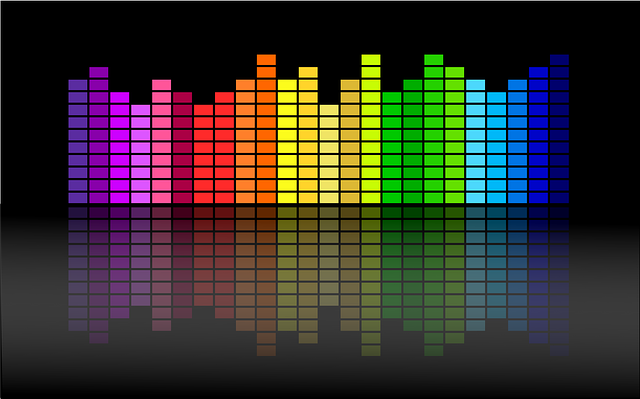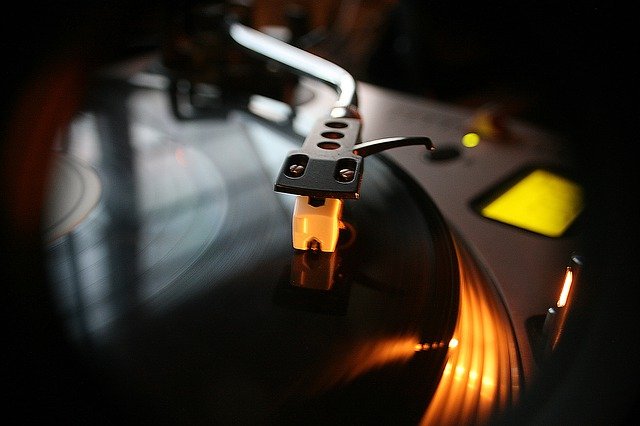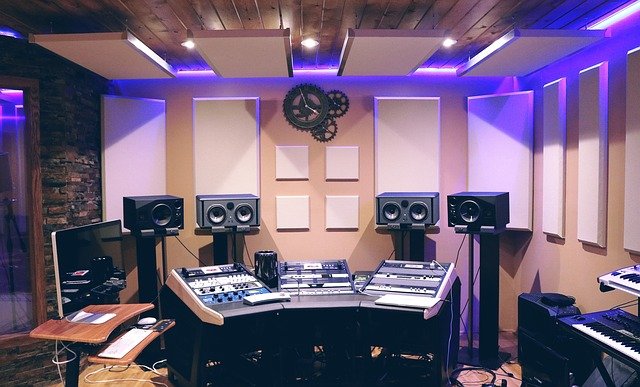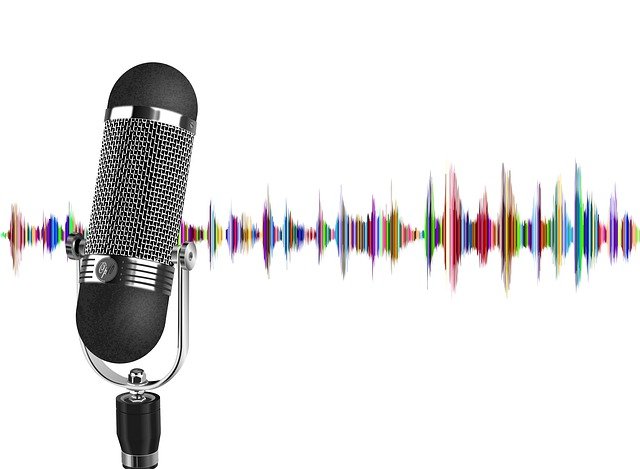What Is Stereo Imaging?
What Is Stereo Imaging? | A Detailed Guide
Imagine a song with no vocals. You can’t understand the lyrics, but you can feel the beat and groove of the music. What’s going through your head? The acoustic guitar is plucking at your heartstrings, and you’re feeling happy as you drift away on a wave of musical bliss.

But what if I told you that in reality, two guitars are playing simultaneously – one to each side of your ears? This type of sound processing is called stereo imaging. This blog post will explore how stereo imaging works and why it enhances our listening experience so thoroughly!
Stereophonic or stereoscopic? The term ‘Stéréophonique’ was coined by a French scientist named Charles Cros in 1877 to classify the different types of sound reproduction systems so that engineers would know how to construct them.
His view was that since sound is vibration, and vibration can be visualized as a moving object, then it must also be capable of imitating an object. This seems to take for granted that human hearing is not just a perceptual phenomenon but also has to do with physical matter. From 1877 to 1973, the English spelling changed from ‘stereophonic’ to stereoscopic.’
Mono
About five decades or so before stereo imaging, the industry settled on one channel for the music and two channels for the voices. These days, we have incredibly powerful surround sound systems which deliver multichannel surround audio. But even if you’re listening to a single-channel stereo recording, you hear three separate channels. These are left rear (L-R), right rear (R-R), and left main (L-M) with a center channel (C).

Your brain uses these channels to create a 3D dimension of sound.
The left and right channels are the stereo sound, while L-R is a mono recording. The center channel provides vocals for both speakers in your headphones or earbuds, which helps you to hear what’s happening on either side of it more clearly than if they were coming from one speaker at all times – this creates an illusion that sounds.
Stereo Imaging
So, what is the importance of stereo imaging? We’ve all heard a singer’s voice in a live concert, only to realize that we can’t make out the words. This is because when music is recorded and mixed, it’s usually done with multiple microphones placed at different locations. Each instrument has its sound. When instruments are playing together in a song, the microphone will pick up one sound while a different microphone may pick up a different sound from that same instrument.

Two instruments aren’t always playing the same thing at the same time. This is the kind of effect that makes you feel like you’re listening to a live band rather than a recording. If you can’t tell where one sound starts and another stops when multiple instruments are playing, it’s not considered well recorded or mixed.
Even if you recorded all the instruments in concert, a listener would still need to understand what each musician is playing to appreciate the song as a whole.
Surround
It’s the same with TV and movies. To get a really good 5.1 surround sound movie or TV program, you might need to have a full surround setup. It may be easier to have multiple speakers on your TV than a powerful audio system in your living room because there is usually less space in the average home theater room than in a bedroom. There are also fewer wires to worry about, which means more convenience.
The speakers are placed in the following positions: Front Left, Center Channel Speaker (or “Middle”), Rear Right. The subwoofer is usually located on either side of your TV. It can be positioned anywhere from under or to one corner depending upon how much space you have available for it and what type/size speaker system that’s being installed in your room.

The first surround sound system consisted of seven speakers, and for many years, the basic 5.1 Home Theater System was the standard. Since the mid-1990s, however, people have begun experimenting with other equipment types to add more enhancements to their surround sound setups.
If you’re interested in understanding how a 7.1 surround sound setup works, I highly recommend reading this article about “7.1 / 7.2 Surround Sound System History”.
The subwoofer is usually located on either side of your TV. It can be positioned anywhere from under or to one corner depending upon how much space you have available and what type/size speaker system is being used. The speakers are typically mounted onto the walls, but some people prefer hanging them above their heads for the sound to come from different angles.
How does sound become stereo? To hear this properly, we need to explore the differences between mono and stereo. When two instruments are playing simultaneously, our ears pick up both of them, and then our brain creates a 3D audio experience for us.
This is an example of a stereo sound: “The song starts with drums and bass, then the guitars come in. The vocals are on top.” This means that there’s one instrument playing at any given time, but it can be heard from different angles depending upon where you’re standing or sitting relative to them (i.e., left vs. right, front vs. back).
However, if you listen to this song through headphones, you’ll notice that the bass is powerful since there’s only one cable plugged into your stereo. When a single cable with a single speaker is plugged into your audio equipment, that’s an example of “mono sound.” It reduces all other sounds to mono, and consequently, you don’t hear any of the vocalist’s lyrics and the other instruments in this song.
The stereo image is the sound of a song as it’s heard through speakers. It can be described in terms like “wide” or narrow,” and you’ll notice that when listening to music on your computer, for example, with headphones plugged into both ears (i..e mono). There will only ever appear one speaker icon next to the song’s name in your music library. A stereo image can be created by either one or two speakers and is the result of a person being able to hear audio from different angles simultaneously.
A surround sound setup means that you have more than two speakers in your home theater system. For example, a 5.0 surround sound setup would have five speakers in the front, two on either side of you and one behind your head.
The stereo image is created by a person being able to hear audio from different angles at once. So if only three or four channels are coming out of those few speaker cones, then it’s not going to be as immersive an experience for that person. This means that a 5.1 or 7.1 setup, for example, would have more than two speakers, and because of the extra distance that they’d be spread apart from one another, it makes it easier for the listener to judge distances in 3D space.
Soundbars and home theater systems are getting better and better (especially now that we’re beginning to have more choices than just monaural sound).
Separation of audio
You’ll notice that in movies, music isn’t played through the same speakers throughout. This often occurs with large action scenes where you hear one sound on one channel and the next sound from another.
Sometimes you’ll remember it occurring in a scene from movies like Inception or The Matrix, where there’s a dialogue taking place all around what we see on screen. It’s a little hard to explain, but you’ll be able to tell when it happens once you start noticing.
This is called “spatial audio,” and it’s a technique that makes the sound more realistic. It can be used in movies, games, or music for certain scenes where you want things like dialogue coming from different directions, not to confuse what someone says with another person talking on-screen (or off). You’ll notice this in scenes like these from Inception/The Matrix:
You’ll see this in certain musical passages as well. The sound will seem to be coming from a specific direction, and it’ll feel like you’re in the room with them. This is called “spatial audio” because of how realistic this technique can make things for listeners – they get an idea about where something’s happening or who said what just by hearing different sounds come at their ears from in certain directions. Here’s an example from The Hunger Games (when Katniss is hunting for Rue):
Spatial Audio and Animation
You can use spatial audio to help the animation of scenes as well. When something moves, you might be able to hear it move (like your character’s footsteps or a car driving by). This can add to the realism of a movie.
You can use spatial audio to help the animation of scenes as well. When something moves, you might be able to hear it move (like your character’s footsteps or a car driving by). This can add realism and depth for viewers who are watching an animated movie on their TV screen – they’ll feel like what is happening in front of them is happening instead of just being watching it from a screen.
You’ll hear this in at least one scene in the movie Up, for example, where Carl is walking out to chat with Russell.
Ease of listening
You may notice that when you’re watching a movie and the audio switches from one channel to another, sometimes it’s easier to hear what is happening on the channel that’s now playing.
This is because the sound waves are being bounced off of objects and then back to your ears. If you’re watching a movie on TV, for example – it’s easier to hear what someone says if they speak to one side or another depending on where their mouth was when that person said those words about how close (or far) from them you are at the time.
Panning
Panning is the act of placing two or more channels on different speakers, and it moves around the room. This puts you in different locations (and in different rooms) through sound as you move from speaker to speaker.
It might sound a little complicated, but it’s really easy to do with something like an app called Soundflower that allows you to change which channel you hear at any given time easily.
Panning can help create a sense of depth when things are happening “behind” someone else as they move their heads.
Panning vs. Separation
Panning means “to move around,” and it’s a technique used to create a 3D sound field where each sound is coming from a different direction relative to the listener (or an object). The separation of audio refers to the method by which mono music is made into stereo.
Separation is a technique that’s used to create the illusion of space in music. It does this by taking mono recordings and splitting them into two separate channels, one for each speaker or ear (left/right). You can do this with any sound source:
- Vocals from an artist singing on stage
- Instruments being played live at different angles from the stage
- Even dialogue from an actor’s mouth
Panning and separation are two different methods used to create the illusion of sound traveling in a 3D space around your ears. When you hear a sound source coming from the left or right speaker, your brain tries to work out where it was coming from, and then it helps you locate it in the room.
- How to make a piano sound fuller - January 12, 2023
- Uncovering the Lifespan of Piano Strings: How Long Do They Really Last? - January 11, 2023
- Do cats like piano music? A Purr-Fect Look at it - October 10, 2022